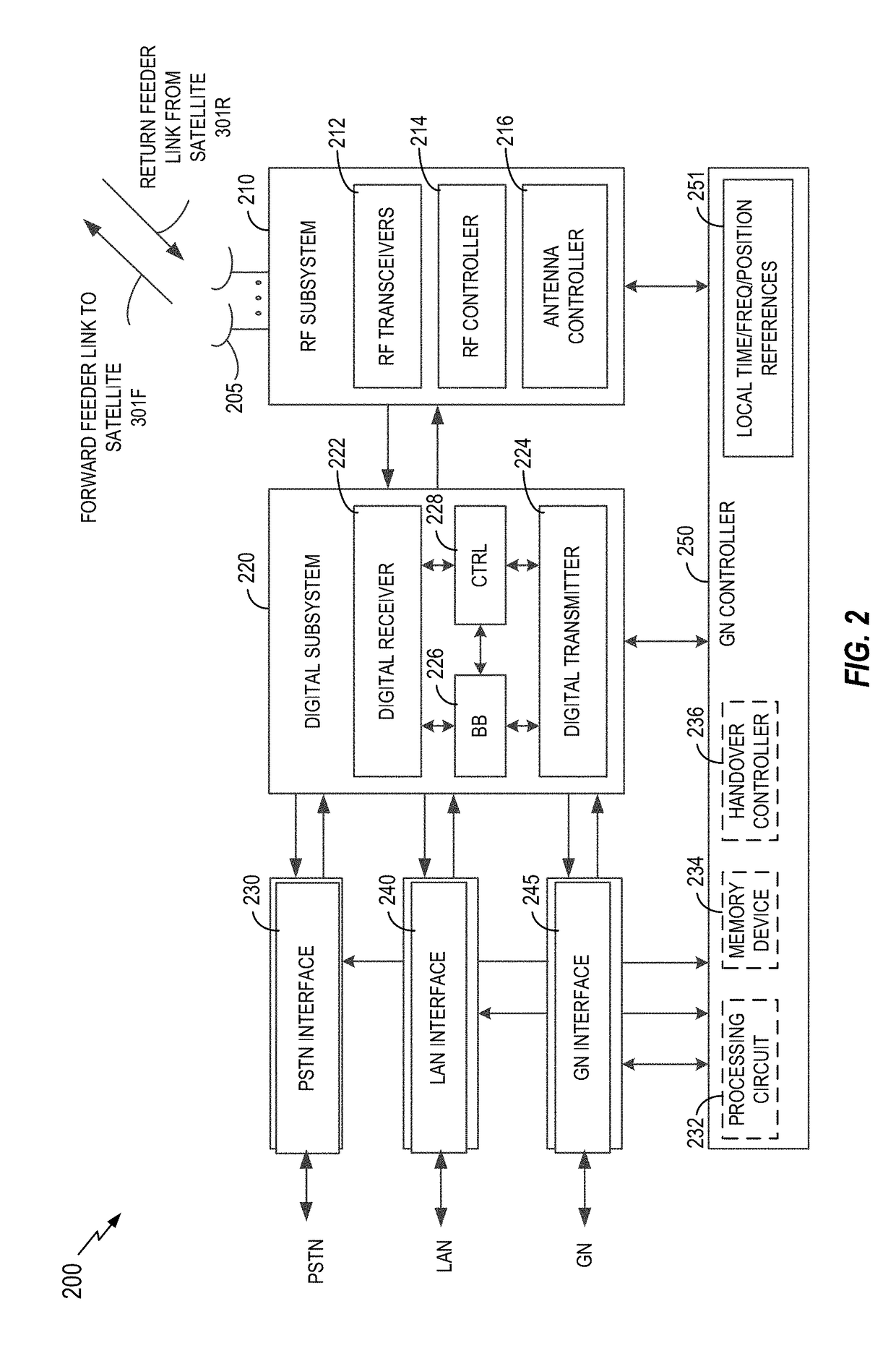Handoff for satellite communication
a satellite communication and handoff technology, applied in the field of satellite communication, can solve the problem of limited number of satellites that may be placed in the gso
- Summary
- Abstract
- Description
- Claims
- Application Information
AI Technical Summary
Benefits of technology
Problems solved by technology
Method used
Image
Examples
example handoff
Signaling
[0143]The disclosure relates in some aspects to signaling to support idle mode handoff. FIG. 6 illustrates a communication system 600 that includes a first apparatus 602 and a second apparatus 604. The first apparatus 602 maintains (e.g., generates) idle mode handoff information (e.g., a table) 606 and includes a transmitter 608 that can transmit idle mode handoff information 610 to the second apparatus 604. The second apparatus 604 includes a receiver 612 for receiving the idle mode handoff information 610 such that the second apparatus 604 can maintain local idle mode handoff information 614. In some aspects, the first apparatus 602 may be an example of the GN 200 or the GN 201 of FIG. 1. In addition, the second apparatus 604 may be an example of the UT 400 or the UT 401 of FIG. 1.
[0144]In some implementations, the communication system 600 is a satellite communication system. FIG. 7 illustrates a UT 702 in communication with a GN 704 via a satellite 706 in a non-geosynchr...
example handoff table
[0157]A GN may send idle mode handoff information (e.g., autonomously or in response to a request) via an idle mode handoff table. An example idle mode handoff table is shown in Table 1. The base time for the table (e.g., in seconds) may be, for example: absolute GPS time (e.g., 32 bits). This table would be updated over time (e.g., as the satellites move and / or the UT moves). It should be appreciated that different handoff tables may include different types of information and / or different entries.
TABLE 1Satellite IDStart Times (e.g., seconds)Sat1startTime1outagestartTime2Sat3startTime3. . . . . . SatNstartTimeN
[0158]In an example implementation, a handoff table may include the three fields that follow. A first field is for the base time for the table (e.g., in seconds): absolute GPS time (e.g., 32 bits). A second field is for the Satellite ID (e.g., 16 bits). Table 1 shows an example of this field. The second field could also indicate outage periods when no satellite is covering th...
example messages
[0173]A GN (or some other suitable device) may sent various types of information to an idle UT (or some other suitable device). In some scenarios, this information may be sent via a broadcast information block (BIB) message. In an example implementation this information indicates at least one carrier frequency (e.g., an absolute radio-frequency channel number) in which the next cell will be transmitting. This information may be may be carried by a 16 bit (or other size) parameter called “nextCellTransmitFreq.” As one example, nextCellTransmitFreq can indicate a list of possible frequencies that can follow. As another example, nextCellTransmitFreq can indicate a particular frequency. It should be appreciated that nextCellTransmitFreq could take other forms as well. It may be assumed that a satellite will be transmitting using a limited number N (e.g., 8 or some other suitable number) of carrier frequencies on the forward service link (FSL) over a given region. The set of N carrier fr...
PUM
 Login to View More
Login to View More Abstract
Description
Claims
Application Information
 Login to View More
Login to View More - R&D
- Intellectual Property
- Life Sciences
- Materials
- Tech Scout
- Unparalleled Data Quality
- Higher Quality Content
- 60% Fewer Hallucinations
Browse by: Latest US Patents, China's latest patents, Technical Efficacy Thesaurus, Application Domain, Technology Topic, Popular Technical Reports.
© 2025 PatSnap. All rights reserved.Legal|Privacy policy|Modern Slavery Act Transparency Statement|Sitemap|About US| Contact US: help@patsnap.com



